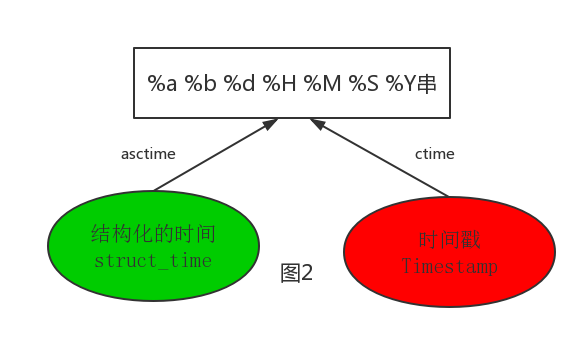包是一种通过使用.模块名来组织Python模块名称空间的方式
包就是一个包含有__init__.py文件的文件夹,所以我们创建包的目的就是为了用文件夹将文件/模块组织起来
在Python3中,即使包下没有__init__文件,import包仍然不会报错,而在Python2中,包下一定要有该文件否则报错
2.创建包的目的不是为了运行而是被导入,包只是模块的一种形式,包的本质就是一种模块
包的本质是一个文件夹,功能越多,模块越多,我们需要文件夹将模块组织起来,提高程序的结构性和可维护性
单独导入包名称时不会导入包中所有包含的所有子模块
绝对导入,以执行文件的路径为起始点开始导入称之为绝对导入
优点:执行文件与被导入的模块都可以使用
缺点:所有导入都是以sys.path为起始点导入麻烦
相对导入:以.为起始代替路径只能在一个包中使用不能用于不同目录中
优点:导入更加简单
缺点:只能在导入包中的模块才能使用
1.什么是序列化
序列化就是将内存中的数据类型转成另外一种格式
即字典----->序列化------>其他的格式--------------->存到硬盘
硬盘--------->读取---------->其他格式-------------->反序列化---------------->字典
2.为什么要序列化?
持久保存程序的运行状态
数据的跨平台交互
2.如何序列化?
json:
优点:这种格式是一种通用的格式,所有的编程语言都能识别
缺点:不能是被所有python类型
json格式不能识别单引号
piclke:
优点:能识别所有Python类型
缺点;只能被Python这门语言识别
json使用dumps()方法将数据序列化参数为序列化对象,
也可以使用dump()方法直接写入文件并序列化,需要的参数是序列化对象及文件对象
读取json序列化的字符,可以使用load()方法与loads()方法
其中load()方法参数为文件对象,loads()参数类型字符串
pickle可以识别python类型
方法与json相同,不同点是读写都是bytes类型
时间分为三种模式:
1.时间戳
time.time()方法可以得到
2.格式化的字符串
time.strftime('%Y-%m-%d %H :%M;%s %p')
3.结构化的时间对象:
使用time.localtime()
时间转换
时间戳=====>struct_time=========>格式化的字符串
1 struct_time=time.localtime(time.time()) 2 res=time.strftime('%Y-%m-%d',struct_time)
格式化的字符串======>struct_time=======>时间戳
1 struct_time=time.strptime('2017-03-11','%Y-%m-%d') 2 res=mktime(struct_time))


1 localtime() 2 将一个时间戳转换为当前时区的struct_time,参数未提供时默认为当前时间 3 gmtime()类似于localtime()将时间戳转换为0时区 4 mktime()将一个struct_time转化为时间戳 5 time()返回当前时间戳 6 strftime('%Y-%m-%d %H-%M%S')格式化时间 7 time.strptime(string[, format]) 8 把一个格式化时间字符串转化为struct_time。实际上它和strftime()是逆操作。 9 print(time.strptime('2011-05-05 16:37:06', '%Y-%m-%d %X')) 10 time.struct_time(tm_year=2011, tm_mon=5, tm_mday=5, tm_hour=16, tm_min=37, tm_sec=6, 11 tm_wday=3, tm_yday=125, tm_isdst=-1) 12 在这个函数中,format默认为:"%a %b %d %H:%M:%S %Y"。 13 asctime([t]) : 把一个表示时间的元组或者struct_time表示为这种形式:'Sun Jun 20 23:21:05 1993'。 14 如果没有参数,将会将time.localtime()作为参数传入。 15 print(time.asctime())#Sun Sep 11 00:43:43 2016 16 ctime([secs]) : 把一个时间戳(按秒计算的浮点数)转化为time.asctime()的形式。如果参数未给或者为 17 None的时候,将会默认time.time()为参数。它的作用相当于time.asctime(time.localtime(secs))。 18 print(time.ctime()) # Sun Sep 11 00:46:38 2016 19 print(time.ctime(time.time())) # Sun Sep 11 00:46:38 2016 20 import datetime

1 import random 2 3 print(random.random())#(0,1)----float 大于0且小于1之间的小数 4 print(random.randint(1,3)) #[1,3] 大于等于1且小于等于3之间的整数 5 print(random.randrange(1,3)) #[1,3) 大于等于1且小于3之间的整数 6 print(random.choice([1,'23',[4,5]]))#1或者23或者[4,5] 7 print(random.sample([1,'23',[4,5]],2))#列表元素任意2个组合 8 print(random.uniform(1,3))#大于1小于3的小数,如1.927109612082716 9 item=[1,3,5,7,9] 10 random.shuffle(item) #打乱item的顺序,相当于"洗牌" 11 print(item) 12 复制代码 13 import random 14 def make_code(n): 15 res='' 16 for i in range(n): 17 s1=chr(random.randint(65,90)) 18 s2=str(random.randint(0,9)) 19 res+=random.choice([s1,s2]) 20 return res 21 22 print(make_code(9))

1 import random 2 3 print(random.random())#(0,1)----float 大于0且小于1之间的小数 4 5 print(random.randint(1,3)) #[1,3] 大于等于1且小于等于3之间的整数 6 7 print(random.randrange(1,3)) #[1,3) 大于等于1且小于3之间的整数 8 9 print(random.choice([1,'23',[4,5]]))#1或者23或者[4,5] 10 print(random.sample([1,'23',[4,5]],2))#列表元素任意2个组合 11 12 print(random.uniform(1,3))#大于1小于3的小数,如1.927109612082716 13 14 item=[1,3,5,7,9] 15 random.shuffle(item) #打乱item的顺序,相当于"洗牌" 16 print(item) 17 复制代码 18 import random 19 def make_code(n): 20 res='' 21 for i in range(n): 22 s1=chr(random.randint(65,90)) 23 s2=str(random.randint(0,9)) 24 res+=random.choice([s1,s2]) 25 return res 26 27 print(make_code(9))
